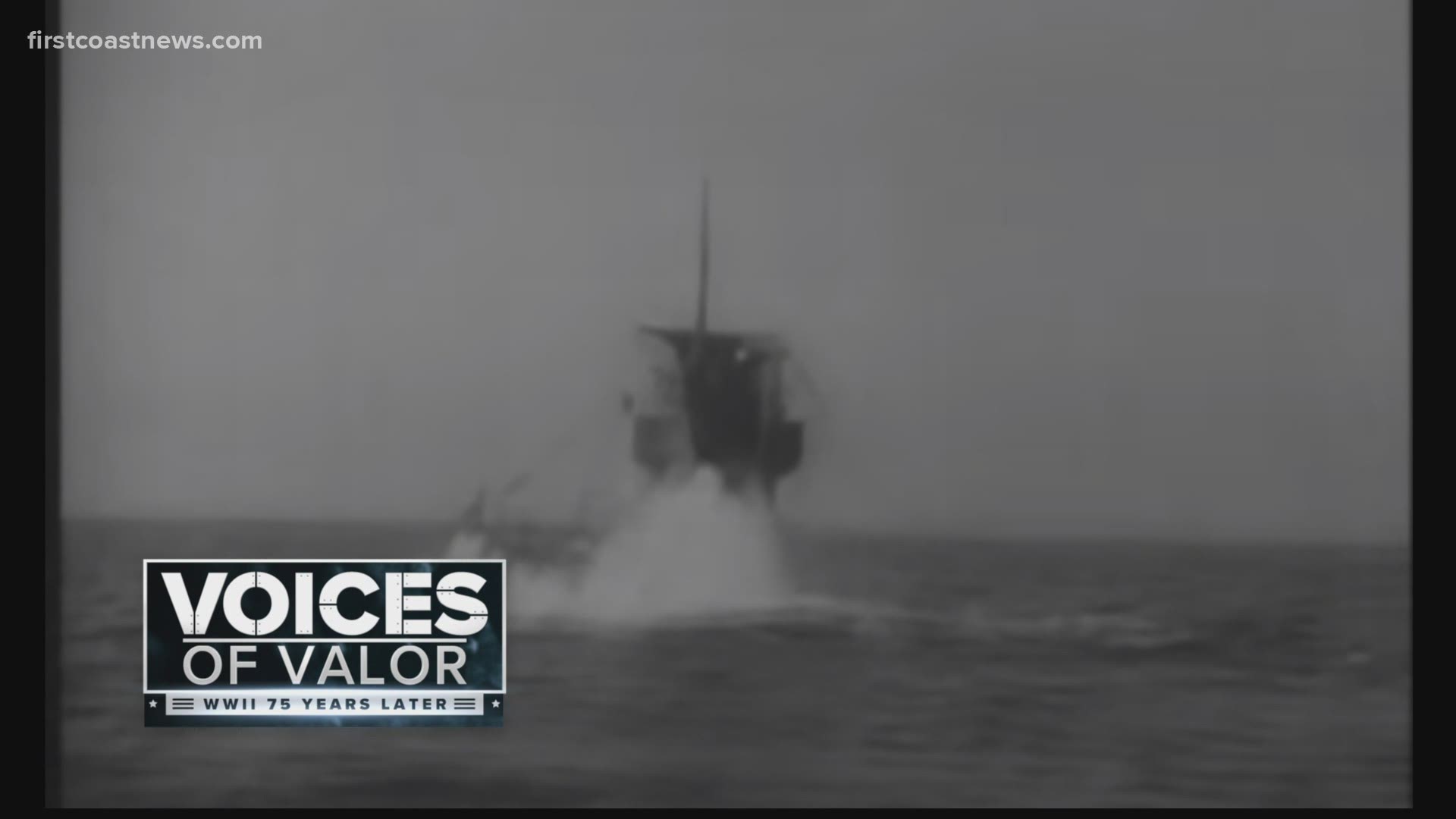KINGS BAY BASE, Ga. — Archie Holte thinks of rain showers a bit differently than most people would.
“We were going through the Lombok Straight," Holte remembered. "We had to go through at night because they could shoot you from both sides.”
During World War II, he served and remembers going days underwater without ever seeing the sky, let alone the rain.
Holte, and the men who served alongside him, were going through a treacherous stretch of islands, a straight that separated the South China Sea, Pacific and Indian Oceans. It was a narrow body of waters where subs had no place to hide.
Since theirs is known as the silent service, they depended on stealth to avoid attacking ships that were just above on the surface.
“This one ship we came across was a depth charge factory, because boy he really laid it on us,” Holte remembers.
The Japanese ship raining down a cloud of depth charges that could send the crew of the submarine to their deaths in an instant.
For a bit of historical perspective, Holte, his crew and the thousands of other submariners in World War II were some of the first to pierce the Pacific Front.
It was the submarines that really lead the way against Japan, considering a good portion of the American surface fleet had been disabled in the attacks on Pearl Harbor.
Yet, the Japanese, for some reason, never bombed the subs or the fuel reserves that were precariously close to the battleships they sunk in the harbor.
It was sailors like Holte and Antonio Faella, affectionately known as bubble heads, who were able to get out first.
“When the war broke out, about the only thing we had out there was submarines," Faella said. "We held the Japanese front until the surface craft arrived.”
That had some devastating impacts.
Keith Post is a submariner, historian and runs a submarine museum in St. Mary’s, GA.
“The sub force suffered the highest rate of causality of any other force in the war," Post said, noting that it was a small force. However, by percentage of men serving on submarines, many did not come home.
"If a boat went down, all 80 guys went down," Post explained. "You didn’t’ survive that."
“I think about how horrible it must have been for them to go down,” Faella said. “I think about when I was depth charged, and we made it, some men weren’t so lucky."
Often it did take luck, or maybe some divine intervention to survive in those situations. Archie’s sub had no where to hide. They just had to sit and wait, in total silence, wondering if the Japanese warship above would finish them off.
“If he made one more pass, he would have blown the hatch off," Holte said. "But a typical rain shower came in and he couldn’t hear us anymore.”
The rain was just loud enough to hide their movements.
A shower some may take for granted is why Holte is here today.
“Grace of God, yeah we might not be here anymore.”

